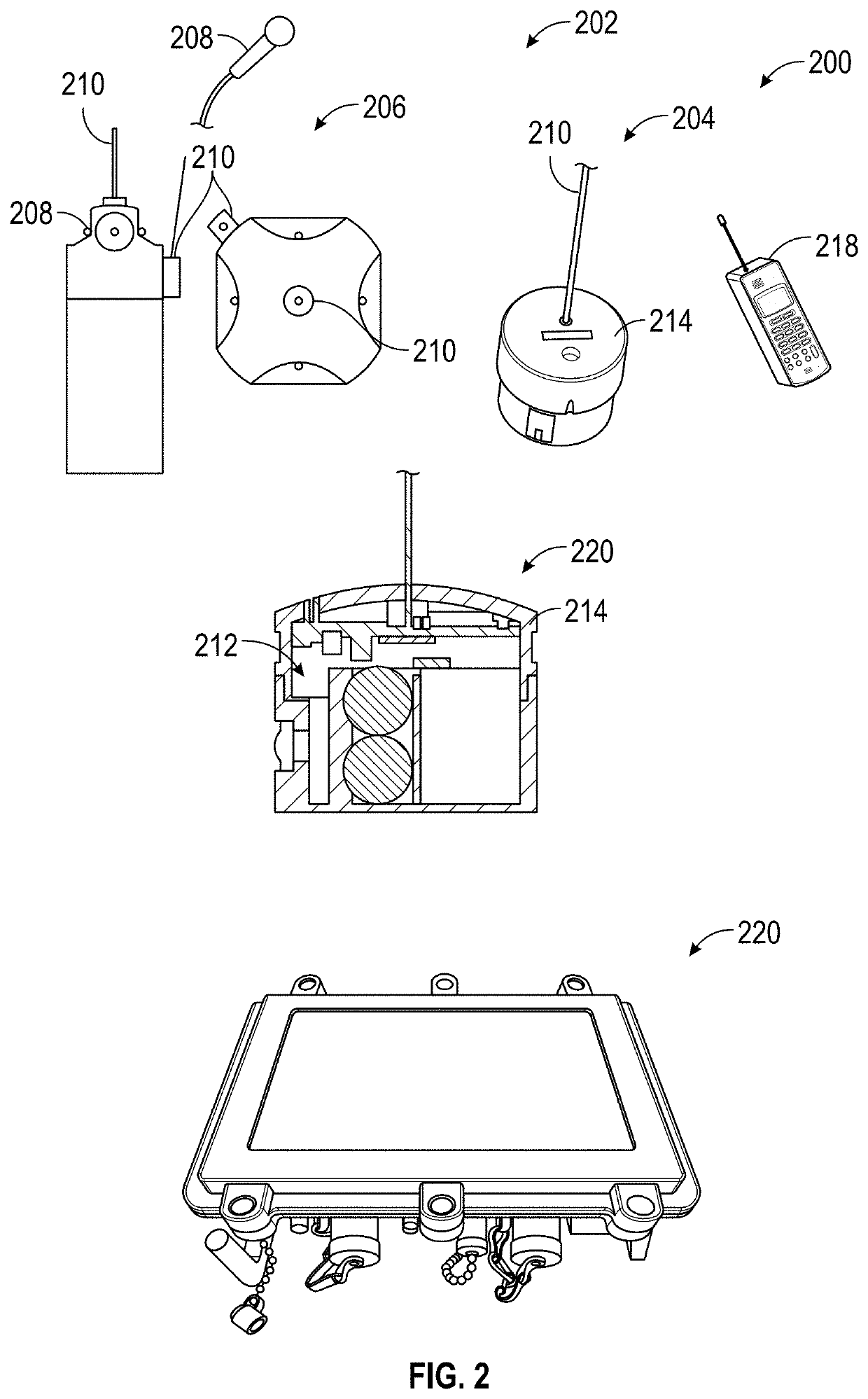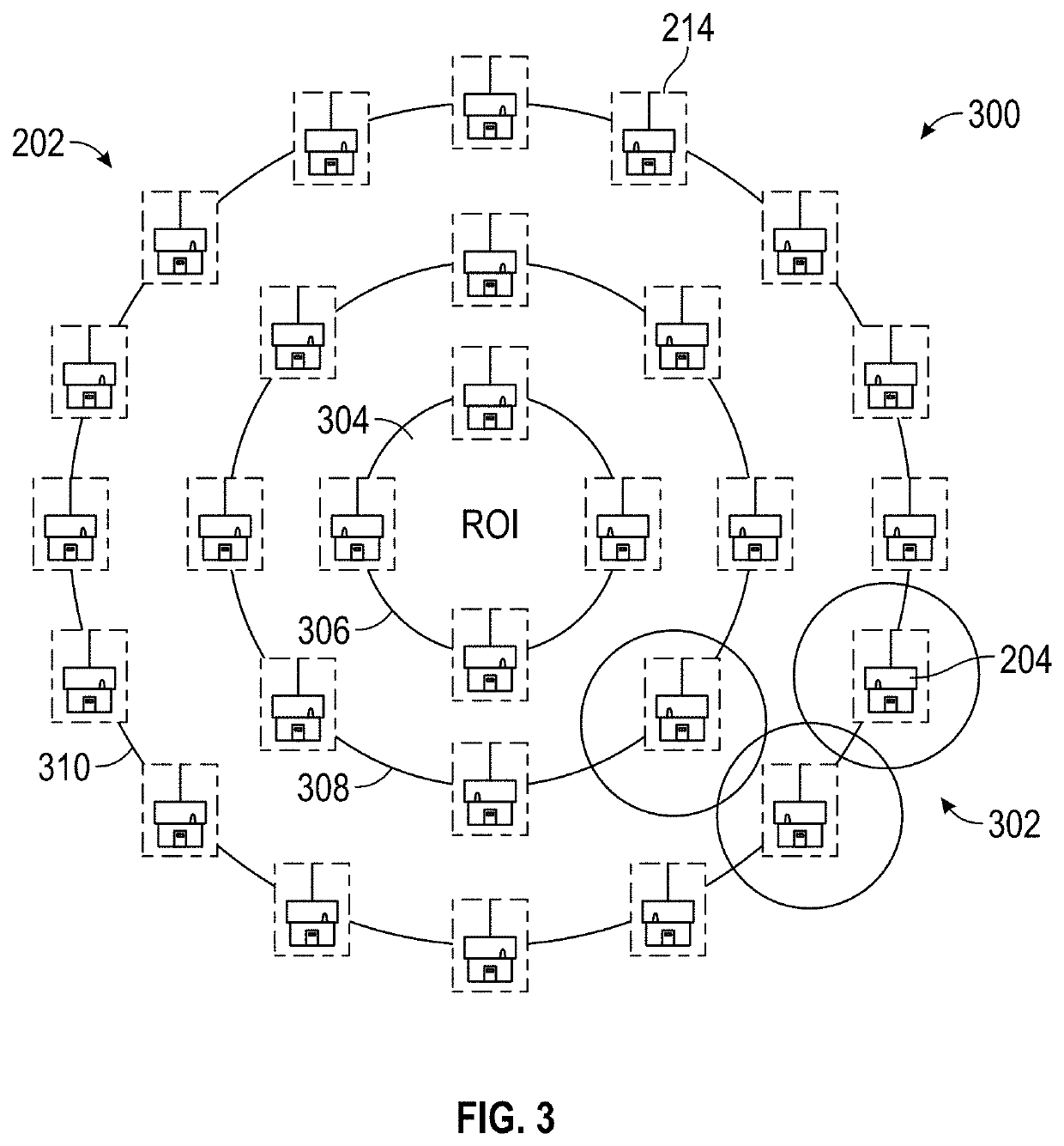Acoustic detection of small unmanned aircraft systems
- Summary
- Abstract
- Description
- Claims
- Application Information
AI Technical Summary
Benefits of technology
Problems solved by technology
Method used
Image
Examples
Embodiment Construction
[0020]Embodiments of the invention solve the above-described problems and provide a distinct advance in the field by providing a method and system for passively detecting UAS. In some embodiments, acoustic sensors may be arranged in arrays. The acoustic sensors may detect vibrations in the air and ground as derived from UAS propeller rotations. The signal measured by the acoustic sensors may be compared to a database of known sensors to determine the source of the signal and if the source of the signal is friendly or a possible threat. In some embodiments, acoustic sensors may have integrated electro-optical imaging components operated in an orthogonal manner for further enhancing confidence in detection of UAS. In some embodiments, detection of the UAS may trigger additional sensors and systems and methods for countering the threat.
[0021]Though UAS are described in embodiments herein, it should be recognized that any vehicle may be detected and recognized. For example, the vehicle ...
PUM
 Login to View More
Login to View More Abstract
Description
Claims
Application Information
 Login to View More
Login to View More - R&D
- Intellectual Property
- Life Sciences
- Materials
- Tech Scout
- Unparalleled Data Quality
- Higher Quality Content
- 60% Fewer Hallucinations
Browse by: Latest US Patents, China's latest patents, Technical Efficacy Thesaurus, Application Domain, Technology Topic, Popular Technical Reports.
© 2025 PatSnap. All rights reserved.Legal|Privacy policy|Modern Slavery Act Transparency Statement|Sitemap|About US| Contact US: help@patsnap.com



